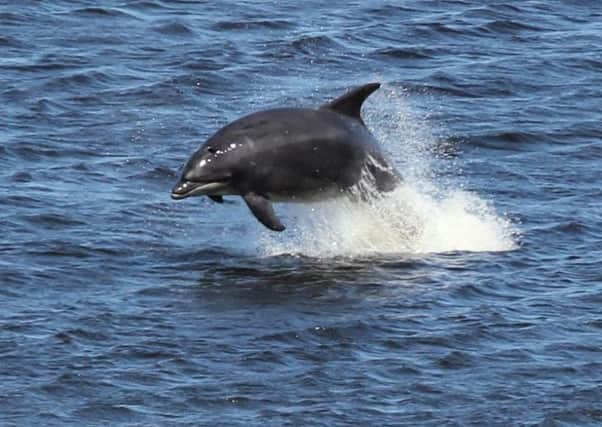Ben Wilson: Complications abound for dolphins as well as humans


But a viewing off the west coast, though common in some spots, can be a rare enough sight to be talked about for years. Bottlenose dolphins are not the only cetaceans (whales, dolphins and porpoises) off our shores but their inquisitive nature, coastal habits and frequently tattered fins mean that it’s possible to piece together something of their lives.
With all the political hurly burly in recent weeks, our own governmental associations, nationality identity and relationships with our neighbours close at hand and, of course, further afield has been rather consuming.
Advertisement
Hide AdAdvertisement
Hide AdSo how do our charismatic ocean-going neighbours organise their friendships, alliances and divisions? This may be a topic seldom considered by anyone lucky enough to spot a dolphin’s antics but just now, perhaps, this is something that might be topical to consider.
It turns out that the sea, open and cosmopolitan and with occupants free to wander at will, is not without political borders for animals as socially equipped as bottlenose dolphins. This species (in coastal waters at least) turns out to structure its societies into groupings known as communities. These units of allegiance and home territory may be small – only a dozen or so individuals – or larger groups composed of hundreds of individuals or more. Simple enough, but what of their politics?
While we can’t ask dolphins what they think of their neighbouring communities by vote or interview we can observe who they associate with and where particular characters reside. It turns out Scotland has at least three communities, the rest of the UK another three or more and there are similar groupings all along the Atlantic seaboard to Portugal and beyond.
Relationships between these communities are intriguing. Twenty five years ago dolphins in the Moray Firth appeared to be restricted specifically to this embayment but they have spread south, around the corner to Aberdeen then the Firth and Forth and further south still. They have spread so far now that a coastal dog-walker off northern England might spot them.
The west coast of Scotland has at least two communities which couldn’t be more different from one another. If you were to see a particular bottlenose dolphin off Arran during your Clydeside Easter holiday you might see the exact same dolphin on your Skye holiday the following year. In contrast, if you see bottlenose dolphins from the Barra to Eriskay ferry in the Outer Hebrides one year you’d be as likely to see the very same creatures a decade later.
So the home ranges and mobility of dolphins varies widely between their communities. These patterns are not fixed either. Dolphins normally resident in one area for many years may up sticks and go visiting. A group of individuals familiar with the west coast of Scotland were spotted one year checking out their neighbours in Moray Firth and then reappeared with companions off western Ireland another. Clearly all is not simple in the dolphin world.
So next time you’re gazing out to sea with a mind weighted down by recent political events, spare a thought for these complex communities, allegiances and rearrangements taking place on the other side of the beach.
lProfessor Ben Wilson is a marine ecologist with the University of the Highlands and Islands at the Scottish Association for Marine Science